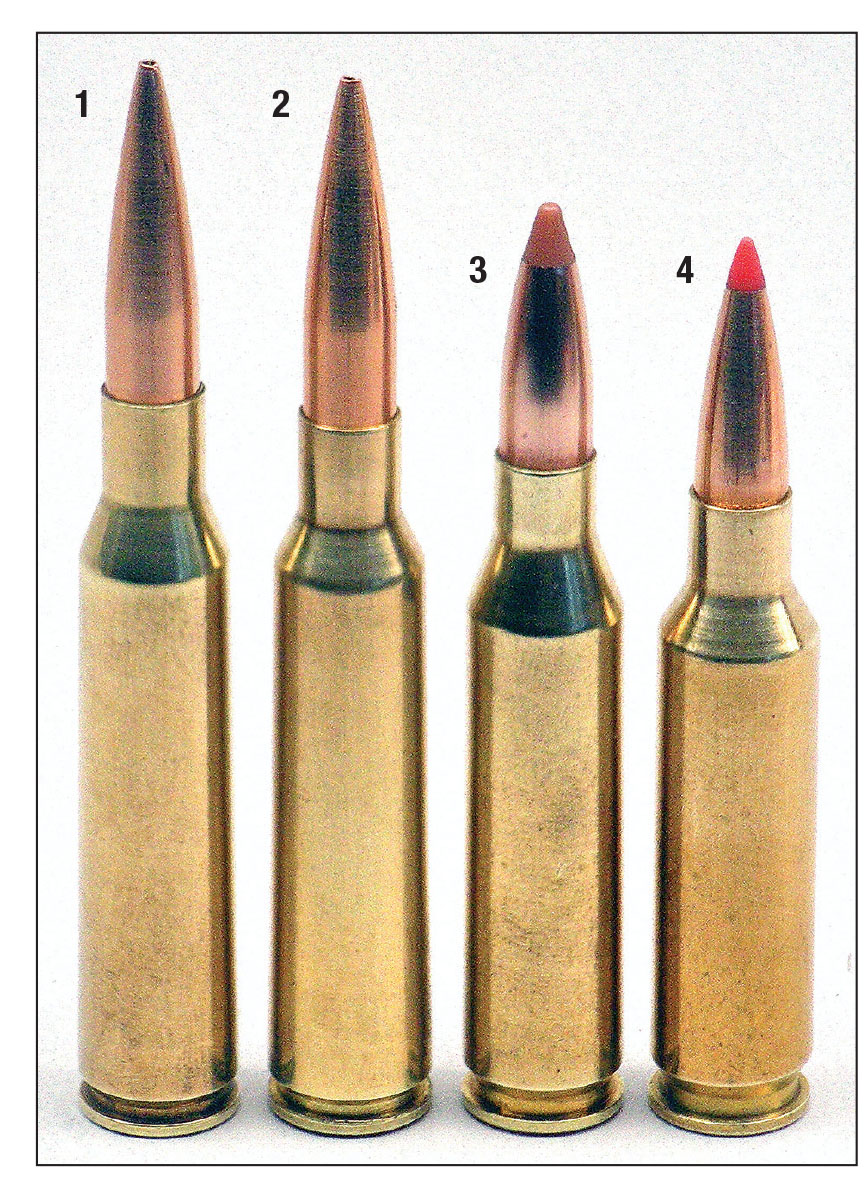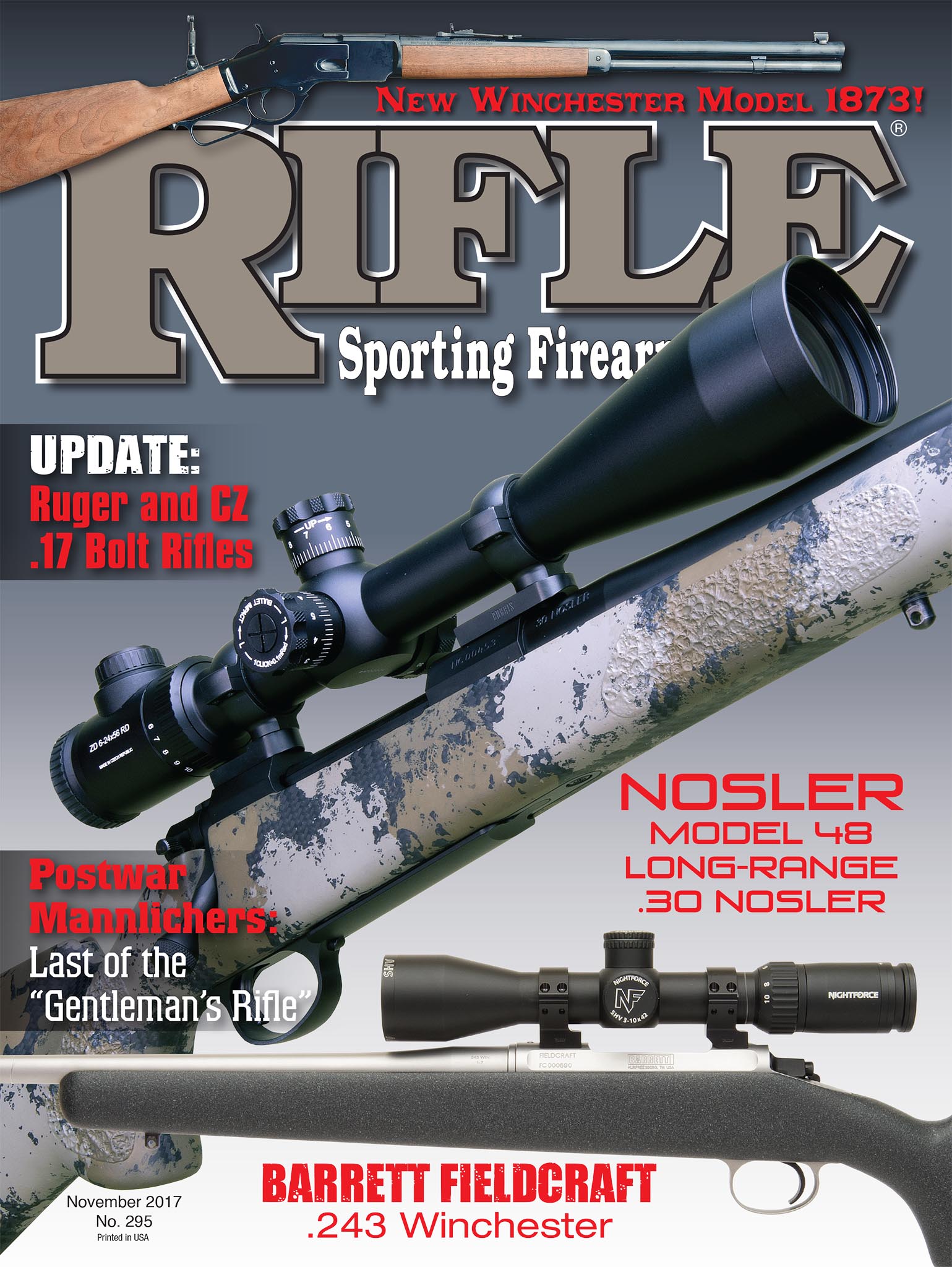Spotting Scope
Ideal Deer Rifle?
column By: Dave Scovill | November, 17
All the talk regarding the 6.5 Creedmoor in the gun press and on the Internet recently reminds me of my lifelong quest for the ideal western hunting rifle. In effect, the 6.5 Creedmoor is being flaunted by the current gun press as the ideal deer cartridge, apparently unseating the .260 Remington, which as I recall was the last cartridge to hold that title. Before that it was the 7mm-08 Remington, and before that . . . well, let’s just say the title has been passed around a lot in the last 50 years.
Therein lies the hangup; there is a difference between an “ideal” deer rifle and one that is suitable for a variety of hunting conditions from coast to coast, from the high lonesome to the brush-chocked timber lands.

Growing up in western Oregon during the late 1950s and early 1960s, it’s probably fair to say the .270 Winchester was largely considered a good choice as an all-around cartridge for hunting deer and, where appropriate, could double up on Roosevelt or Rocky Mountain elk. Whether the terms “all-around” and “ideal” meant the same thing is open to interpretation, likely determined by how many rifles a family could afford. With some experience under my belt, it seemed the .270 was a bit overpowered for blacktail or mule deer. That is, until I went on my first hunt in the eastern two-thirds of the state, where shots could be long or close, depending on whether you were hunting the stands of tall pine and brush or barren meadows and canyons of the high desert mountain ranges.
Graduating from high school in 1962, it was nearly impossible to not hear or read about the new 7mm Remington Magnum, which according to reports in hunting magazines of the day set the new standard for all-around use, which I assumed meant anything from coyotes to elk or moose. Unfortunately, I had been admitted to the University of Oregon in April of that year, so the notion that wages saved from odd jobs and steady work on the French Creek Ranch could be used to buy a rifle was, as my parents summed it up, pretty stupid.
Returning to Oregon after college and a stint with the U.S. Navy, any luster the 7mm Remington Magnum might have had on my choice for a deer hunting rifle wore off – too big and noisy – but there was a relatively new rifle brand I had not heard about (I was pretty busy at the time and the latest rifle scuttlebutt rarely reached remote islands in the Pacific.) chambered for an old cartridge that preceded all the latest wonders of the age by nearly 60 years: the newly introduced Ruger Model 77 and the oldest 7mm of them all, the 7x57mm Mauser.
Scouring sporting goods stores in western Oregon, most outfits knew about the new Ruger rifle, but when asked about a 7mm Mauser, a few responded with, “What’s that?” Then promptly tried to sell me a 7mm magnum, 7mm Express (aka 7mm-06, .280 Remington) or .270.
After a few months of dealing with inept sporting goods salesmen, I finally struck gold in my hometown of Glide, Oregon, at the local saw shop that stocked a few rifles, ammunition, plumbing supplies, McCullough chainsaws and practically anything else you couldn’t find elsewhere. When asked if he had a Ruger 7mm Mauser, the owner, Ben Serafin, responded, “Sure” . . . adding, “Another fellow is interested, I can’t hold it.” I drove the 200-plus miles to Glide the next morning to purchase the rifle.
All that took place nearly 50 years ago and little, if anything, has happened to change my mind about the 7mm Mauser. That rifle served flawlessly to take blacktail, mule deer, elk, bighorn sheep and a few dozen coyotes, until it was stolen in the early 1980s. It was replaced almost immediately with another Ruger 7x57, which became a present to son Jason, and another that failed to shoot as well as the first two and was traded off to John Barsness.
The fourth M77 acquired a few years ago currently stands in the safe with a 26-inch, cut-rifled barrel from Classic Barrel & Gun Works chambered for the 7x57 with a .4-inch leade, aka, freebore. It is the most accurate of the four, consistently producing sub-.4 inch three- and five-shot groups with a variety of handloads, and like the first rifle, the walnut stock was reworked to remove weight and improve balance. Outfitted with a Swarovski 3-9x Z3 scope with a duplex reticle, it is about as close to ideal as any rifle can be for western blacktail or mule deer and pronghorn hunting, or to step up to elk for as far out as prudent shot placement allows. Here again, “ideal” and “all-around” get intermingled.
If there was a rifle that might have challenged the Ruger M77 7x57mm Mauser, it was probably a Remington Model 700 .280 Remington Mountain Rifle with a synthetic stock. It was on loan from Remington for a whitetail, nilgai, feral hog and javelina hunt on the Kennedy Ranch in Texas a number of years ago. Right off, I was impressed with its balance and relatively light weight. Accuracy with Remington factory loads was quite good, running well inside 1.25 inches for three shots fired from a less-than-ideal shooting bench made available to sight in rifles at the ranch. When the hunt was over, I asked to have it sent to Prescott for additional testing. Alas, it was never seen again.
In retrospect, since the .280 Remington, .270 Winchester, 7mm-08 Remington, 7x57mm Mauser and their kin, such as the .284 Winchester, all chambered in modern bolt actions, are all peas in a pod, there isn’t much sense in getting lost in a debate over which is more ideal in that bunch. It is interesting, however, that the 6.5 Creedmoor is being described as the latest and greatest “ideal” deer cartridge, the same word used to describe the 7mm Remington Magnum and several other new entries over the last 50-plus years.
The truth is, Remington’s belted magnum produces a bit more recoil than most folks are willing to put up with, and for the most part generates somewhat more power than necessary for deer-sized game, especially when compared to the .257 Roberts, which in its day was roundly considered nearly ideal for the same purpose.
In reality, the .264 Winchester Magnum was probably one of the best of the highly recommended deer cartridges of the 1950s and ’60s, but it was trounced to death by several distractions, including the .270 WCF, which provided a hint, to me at least, that since the others of that class listed above can also be used effectively on elk, and produce similar ballistics with 130- 140-, 150- and 160-grain bullets, “ideal” could be construed to mean “all-around.”
Taking a good solid look at the 6.5 Creedmoor, it may well be a fine deer cartridge, but as several folks have noted, it is likely a solution to a nonexistent problem since it fairly duplicates the 6.5x57 that is little known in North America but is widely held as a fine choice for roe deer, chamois and moose in Europe, along with the highly regarded 6.5x55.
Perhaps the 6.5 Creedmoor, being chambered in shorter and slightly lighter 2.85-inch bolt actions, gains some points over previous standards that require a slightly longer action, but those talking points are somewhat offset when folks mount a 2-pound 4-12x scope. It is also ironic that the gun press cried “foul” when Remington introduced the .257 Roberts in a 2.85-inch action mountain rifle in the early 1990s but applaud the Creedmoor for the same reason. Our old friend, the late Bob Milek, must be looking down on us with utter confusion.


